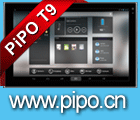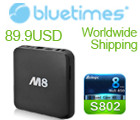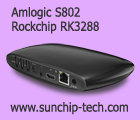Here’s the new flagship Sony Android phone. With a 4.3″ 720p screen, a Dual-core Qualcomm S3 MSM8260 1.5Ghz processor.
Sony Xperia NXT Series launched at Mobile World Congress 2012
Sony presents their new range of Xperia NXT Android Smartphones, S with 4.3″ 720p screen Qualcomm MSM8260 processor, P with 4″ QHD BrightWhite screen ST-Ericsson U9500 Dual-core ARM Cortex-A9, and U with a 3.5″ FWVGA screen interactive LED lights and ST-Ericsson U9500.
Live from the Huawei Event at MWC Barcelona
Check back for close up HD videos of the latest Huawei news.
Huawei K3V2 Quad-core 40nm ARM Cortex-A9, with 64bit memory bandwidth. they claim it has the worlds fastest ARM performance.
Xavier Dietlin’s innovative displays for luxury watches
Xavier Dietlin showcases luxury watches using artistic technology. He creates innovative technological displays for over 50 luxury watches worldwide. He’s also in charge of making the display for the amazing reconstructed Antikythera Mechanism remade by Hublot and displayed 3 places in the world.
Data Visualization workshop at Lift 2012
Kitchen Budapest wants to create tangible interfaces through which people can get in touch with data.
Technology for the Elderly workshop at Lift 2012
Johnatan Landais and Patrick Vincent of Erasme, talk about using technology for elderly people.
MySollars.com at Lift 2012
MySollars.com is an Environmental Loyalty Solution for companies to engage consumers and for consumers it’s a social game to compensate their carbon emmissions.
Mute Watch at Lift 2012
The Mute Watch is made by Mai-Li Hammargren, it provides an interesting design, display and user interface. You can order it for 199 Euros at: http://mutewatch.com
Berlin Design Research Lab at Lift 2012
Fabian Hemmert and Tom Bieling of the Design Research Lab in Berlin talk about their research of the future of mobile phone technology, haptic feedback around phones, wearable computing. They also design a glove for deaf-bling users to be able to communicate over the Internet.
Lego mindstorms robots at Lift 2012
High-school students from Lausanne Switzerland show off their Lego Mindstorms based bluetooth synchronized robots.
Adrianne Jeffries and David Birch on BitCoin, digital worldwide currencies at Lift 2012
Adrianne Jeffries, reporter at The New York Observer and David Birch, Consult Hyperion offer their opinions of the status of BitCoin, worldwide digital currencies, the future of financial services and more.
John Horniblow on Internet Freedom efforts at the United Nations
Billions of people are going to be connected to the Internet for the first time in the next months and years, the United Nations works on Human Rights for the Internet. This is about China, conflict zones, ACTA/SOPA and many other aspects of Internet Freedom worldwide.
Anaïs Saint-Jude on the 17th century origins of Information Overload, Twitter, Blogging
Anaïs Saint-Jude organizes the BiblioTech Program at Stanford, encouraging use of Humanities, Philosophy, Litterature, Arts in Technology companies such as Google, Facebook, Apple.
Marcel Kampman on the future of schools at Lift 2012
Marcel Kampman launched Project Dream School to gather ideas for how to revolutionize schools worldwide.
Next Berlin conference (May 8-9th 2012)
NEXT is a tech conference in Berlin on May 8-9th 2012.
Voltitude Folding Electric Bicycle at Lift 2012
Voltitude is a foldable electric bicycle. Available from March 2012 for about 5000 Swiss Francs, range is 35 kilometers, weight is about 20kg.
Swisscom Labs at Lift 2012
Swisscom is the biggest telecom company in Switzerland, they have launched http://labs.swisscom.ch where any user can submit ideas for what they think Swisscom should do and then Swisscom can fund those and make those ideas happen.
University of Art and Design in Geneva at Lift 2012
Students from HEAD show some of their technological designs at Lift12 in Geneva.
Frog Design enhances social networking at conferences
People can scan the QR code on their badge, then walk in front of a Kinect and projector and it can display overlay information on top of people and they can connect and tweet by simply standing close to each other.
ZMS inZair, free messaging on WiFi and Data networks
inZair ZMS is being demonstrated at Lift12 in Geneva, can be used for free instant messaging and also provides social networking, localization layers are more.



